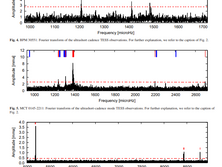In 1987, the author put forward the mutual energy theorem [1]. In 1989, the author published two subsequent papers on the mutual energy theorem [2,3]. Thirty years later, the author noticed that Wheeler Feynman's absorber theory [4,5], John Cramer's transactional interpretation of quantum mechanics [6,7]. The absorber theory is based on the principle of action-at-a-distance [8,9,10]. The absorber theory tried to tell us any current can radiates both retarded and advanced wave. The transactional interpretation of quantum mechanics told us that the emitter can radiate the retarded wave, the absorber can radiate the advanced wave. About the advanced wave, there good reference [11]. In addition, the author also noticed the reciprocity theorem of Welch and Rumsey, de Hoop [12,13,14]. These three reciprocity theorems are very close to the mutual energy theorem proposed by the author in mathematical formula. The main difference is the physical meaning. The mutual energy theorem requires that the two electromagnetic fields participating in the theorem are real physical quantities. The two quantities in the reciprocity theorem only need one to be physical and the other can be virtual. The function of reciprocity theorem is to simplify the calculation of electromagnetic field, it is similar to the Green function. For example, calculates the antenna directivity pattern. It can be applied to prove that the directivity pattern of receiving antenna is equal to that of transmitting antenna. For a microwave device with two ports, if port 1 is the input and port 2 is the output, there is an energy transfer ratio between the two ports. If port 1 and port 2 are swapped, the property that the transfer ratio does not change can be proved by the reciprocity theorem. The function of the mutual energy theorem is to discuss the transmission of energy and the conservation of energy. For a two-port device. The energy prepared for port 2 by the port 1 is equal to the energy obtained from port 2. For example, for an ideal transformer, the input energy of primary coil is equal to the output energy of the secondary coil. For a pair of transmitting and receiving antennas, the energy absorbed by the receiving antennas from the transmitting antennas is equal to the energy provided by the transmit antennas to the receiving antennas. In the mutual energy principle, not only the emitter, the transmitting antenna radiates the electromagnetic waves, but also the absorber and the receiving antenna. The emitter and the transmitting antenna are the light source, which produce the retarded wave radiation. The absorber and the receiving antenna are light sinks which generate advanced wave radiation. Therefore, the mutual energy theory admits that the advanced wave is objective and true. Based on the knowledge of the above from three aspects: 1) absorber theory, 2) mutual energy theorem of the author, 3) Welch / Rumsey /de Hoop reciprocity theorem, the author updates Maxwell's electromagnetic field theory. The electromagnetic field theory based on mutual energy is proposed. This theory includes three new axioms: the principle of mutual energy, the law of conservation of energy and the principle of self energy [15,16,17,18]. The principle of mutual energy replaces Maxwell equations. However, this substitution is not a simple one, but requires Maxwell equations to appear in pairs. In a pair groups of Maxwell's equations, one group corresponds to the light source and the other to the light sink. The light source can be the primary coil of transformer, transmitting antenna and the emitter. The light sink can be the secondary coil of the transformer, the receiving antenna, and the absorber. The author thinks that the light source emits retarded wave and the light sink emits advance wave. Both retarded wave and advanced wave satisfy Maxwell's equations. When the retarded wave and the advanced wave are synchronized, the two waves are superimposed to produce interaction, that is, the mutual energy flow. The mutual energy flow satisfies the mutual energy flow theorem. The mutual energy flow theorem is an enhanced version of the mutual energy theorem. The mutual energy theorem tells us that the energy radiated by the radiant point is equal to the energy absorbed by the absorbing point. The mutual energy flow theorem tells us that that energy is transferred through the mutual energy flow. The principle of self energy tells us that in addition to the retarded wave and the advanced wave there are the time reversal waves too. The time reversal waves make the wave collapse reversely. Quantum mechanics has the theory of wave collapse. Wave collapse can be realized by the combination of wave reverse collapse and a mutual energy flow process. The retarded wave and advance wave can form the mutual energy flow, but there is residual energy in space after the formation of mutual energy flow, which is also cleaned up by the time reversal wave. The remaining energy in space will eventually collapse backward to the point of the wave started. The theory of mutual energy flow is based on the study of Poynting energy theorem. Poynting energy theorem corresponds to the self energy flow of waves. So, our theory develops from self energy flow to mutual energy flow. The same idea can be applied to momentum. Corresponding to momentum, electromagnetic field has momentum conservation law. The law of conservation of momentum involves Maxwell's electromagnetic stress. Similarly, these can be regarded as the so-called law of conservation of momentum. The purpose of this paper is to deduce the corresponding law of mutual momentum and the law of mutual stress flow. Our idea to derive the law of mutual momentum and stress are consistent with the author's previous development from Poynting theorem (self-energy flow theorem) to the mutual energy flow theorem.































